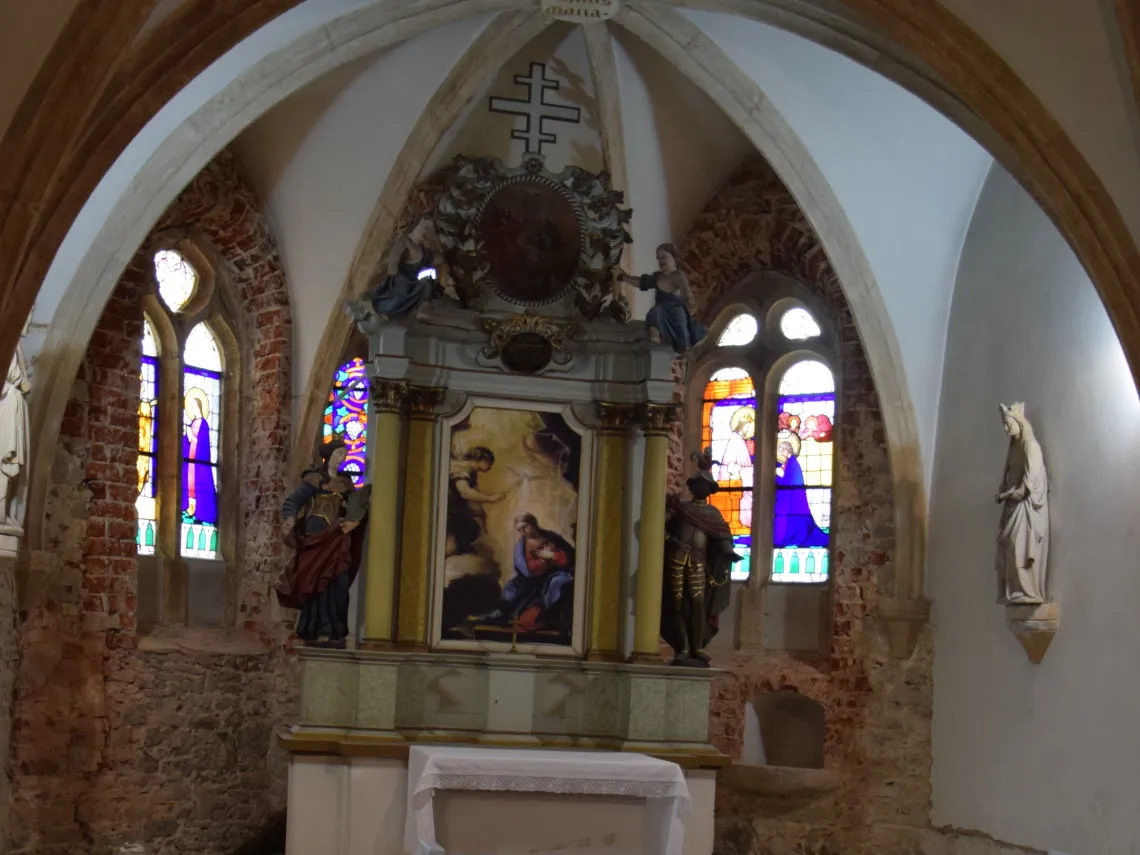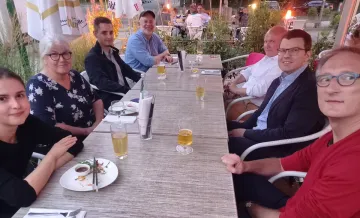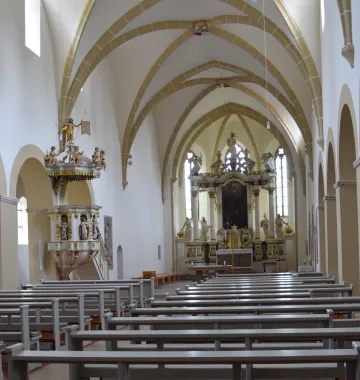With Shared Churches Project, UArizona Scholars Explore Religious Coexistence

During the 16th century, religious reform movements and global colonization brought new Christian denominations into regular contact, resulting in churches shared by more than one faith in many villages, towns, and cities across Europe.
These churches and their congregations represent an early and often-overlooked experiment in the practices of tolerance and intolerance, said University of Arizona historian Beth Plummer.
"People think the Reformation happened and everybody disliked each other and moved away from one another," Plummer said. "But the reality is, these shared churches existed all over. There's much more religious diversity and religious coexistence that has been generally recognized in Europe in the 16th, 17th, and 18th centuries, a time and place better known for religious persecution, violence, and war.”
With her research partners, Plummer is creating a database of shared churches in Early Modern Europe, 1500-1800, a project supported by a $248,474 collaborative research grant from the National Endowment for the Humanities. A melding of historical and technical expertise, this public history project will ultimately result in a website that includes interactive maps and visual storytelling.

Beth Plummer (second on the left) and David Luebke traveled to Wolfenbüttel and Berlin to meet with people about the Shared Churches Project.
Plummer is the Susan C. Karant Chair for Reformation and Early Modern European History in the Division for Late Medieval and Reformation Studies at the University of Arizona. The research team also includes David M. Luebke, the Katherine G. Brady & Thomas A. Brady, Jr., Roger Chickering & Alison Baker Professor of Central European Histories at the University of Oregon; Andrew Spicer, professor of Early Modern History at Oxford Brookes University; Chris Lukinbeal, director of the Geographic Information Systems Technology program at UArizona; and Bryan Heidorn, professor of information at UArizona. Megan Senseney with University of Arizona Libraries is also collaborating along with several graduate students. The team will also collaborate with colleagues at universities and research institutes in Europe.
The overarching question the researchers are trying to answer – and one that is applicable to today – is: How do people of different religions live together in peace?
Understanding how sacred spaces were shared
Plummer and Luebke each did research on aspects of shared churches before they established this project. They discovered that mixed Christian congregations – Catholic, Lutheran, or Reformed – shared the same church building in at least 900 parish churches and 100 convent churches in early modern Germany and began considering how mapping might enhance their work. They were joined by Spicer, who worked on churches from a different perspective: the material culture, architectural and building history, and ritual usage of church buildings.
Their research revealed that this sharing of sacred space was far more common, lasted much longer, and had a more significant impact than previously understood.

"These churches were social, political, and religious spaces," Plummer said. "In addition to religious rituals, these spaces were also where elections, discussions of communal business, and even local gossip took place. Thus, a church was an important locus of everything about the community. And, so, understanding this relationship after churches were shared – when it worked well, and when it didn't work well – can help us understand the way a whole series of relationships and interactions develop."
A Faculty Seed Grant from the University of Arizona financed the first pilot phase of the project, during which graduate students found and recorded the geographical coordinates for 882 shared churches drawn from Luebke’s research.
The second phase, which the team is undertaking with this grant, moves to a more complex mapping and spatial analysis. For example, denominations might erect a wall to separate the two groups or regulate times when a denomination could use objects and spaces that they held in common.
How will the scholars assess how denominations navigated their shared space? These churches left a rich documentary record of their interactions because it coincided with an explosion of printing, record-keeping, purchasing of objects, and space reconfiguration, Plummer said. These surviving records include contracts, court cases, city council minutes, parish visitation records, local chronicles, church inventories, and church books listing baptismal, marriage, and burial records.
"They left written and visual records of their reactions, conflicts, resolutions, and accommodations," Plummer said.
During the summers of 2023 and 2024, members of the research team will conduct complete onsite object, space, and usage inventories for 50 churches. They will also visit archives in Belgium, France, Germany, the Netherlands, and Switzerland. Team members can read, transcribe, and analyze archival documents handwritten in Early Modern Latin, Early New High German, Middle Dutch, Middle French, and Early New English.
"This research allows us to look at the development of certain kinds of prejudices," Plummer said. "To understand how communities can go from harmonious to antagonistic, to the point where they start to view individuals who used to be considered close friends and neighbors as foreigners or enemies."
History meets technology
The availability of new dynamic digital mapping offers new ways for scholars to explore religious interactions and social relationships using geographic and spatial analysis in ways that static maps or descriptive texts alone cannot.
Research assistants from the University of Arizona GIST program and School of Information will refine the databases and develop functionality to allow researchers and other users to search for specific information. They will use Esri’s StoryMaps, a web map-based narrative and storytelling program, and Scalar, an open-source publishing program that supports media-rich digital scholarship, to imbed narratives and images. Ultimately, they will create an interactive webpage with online database search and mapping capability.
“By presenting our research findings in a digital environment, we will ensure greater dissemination to a broader audience,” Plummer said.
Future phases of the project will include creating publicly accessible educational materials for educators and students as well as public history web content.
The University of Arizona will host the Frühe Neuzeit Interdisziplinär (Early Modern German Studies) conference "Shared Spaces: Cultural and Spatial Interactions within and beyond German-Speaking Europe" on March 2-4, 2023.

